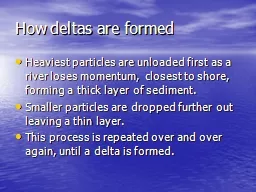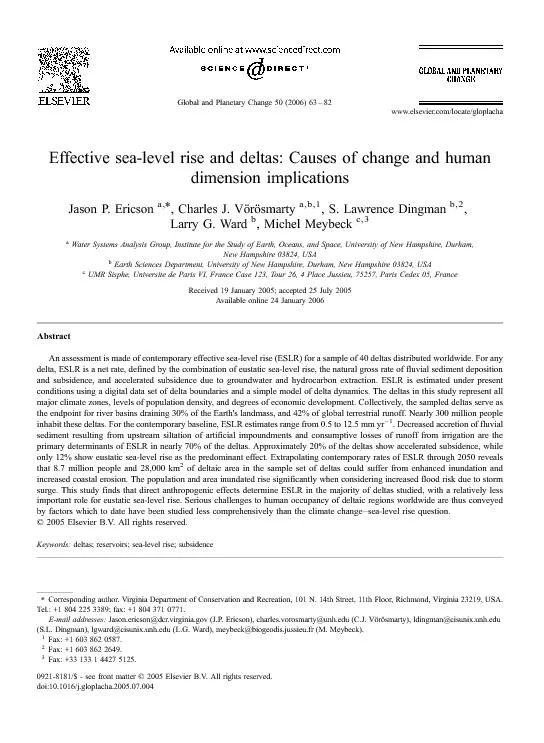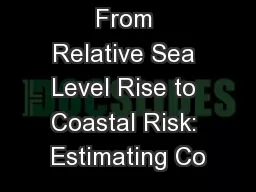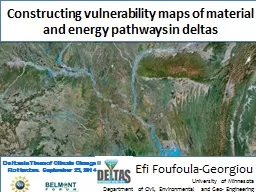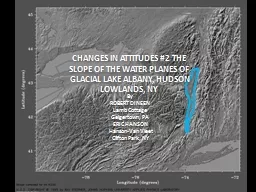PPT-How deltas are formed
Author : karlyn-bohler | Published Date : 2016-03-18
Heaviest particles are unloaded first as a river loses momentum closest to shore forming a thick layer of sediment Smaller particles are dropped further out leaving
Presentation Embed Code
Download Presentation
Download Presentation The PPT/PDF document "How deltas are formed" is the property of its rightful owner. Permission is granted to download and print the materials on this website for personal, non-commercial use only, and to display it on your personal computer provided you do not modify the materials and that you retain all copyright notices contained in the materials. By downloading content from our website, you accept the terms of this agreement.
How deltas are formed: Transcript
Download Rules Of Document
"How deltas are formed"The content belongs to its owner. You may download and print it for personal use, without modification, and keep all copyright notices. By downloading, you agree to these terms.
Related Documents

